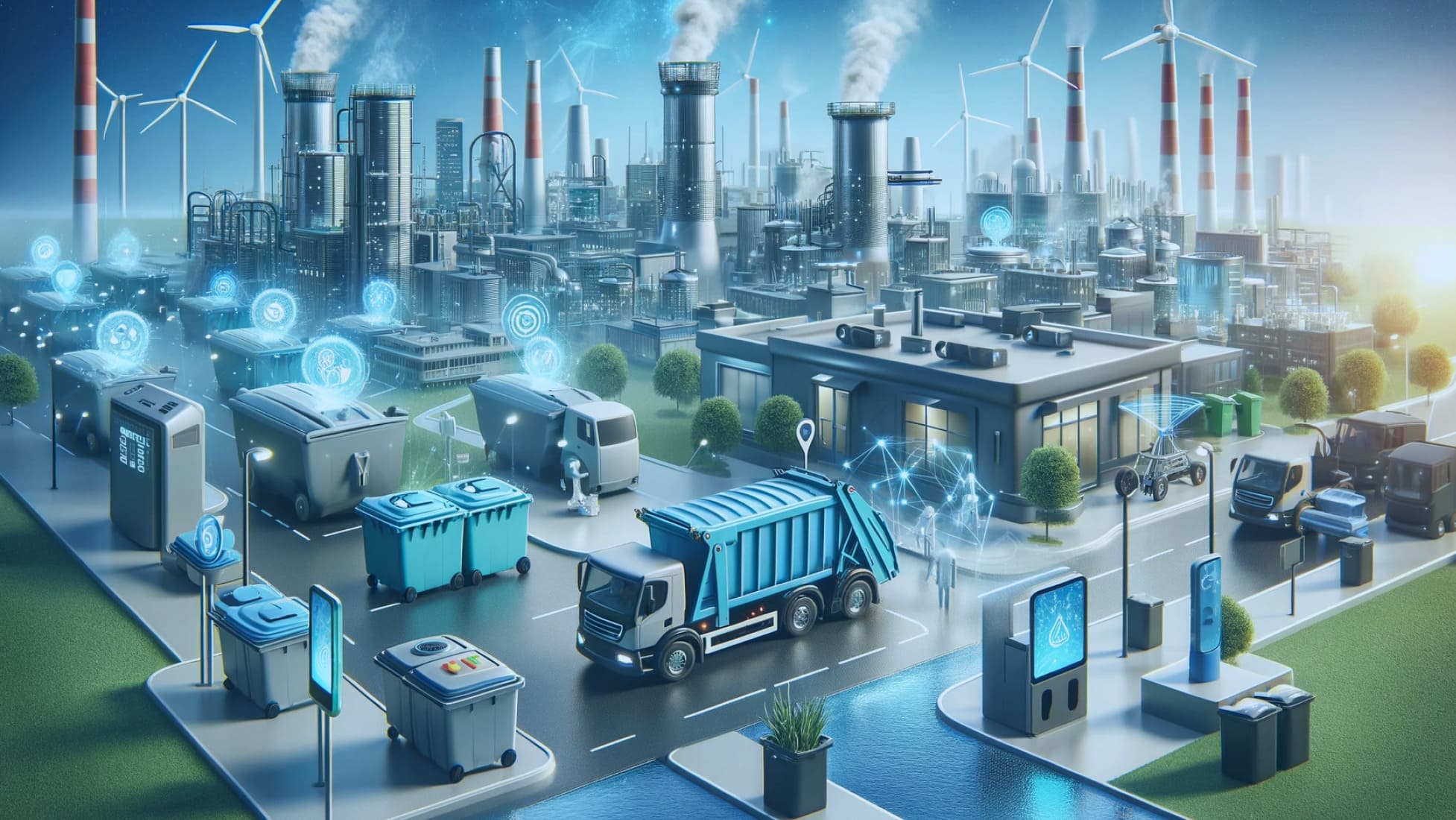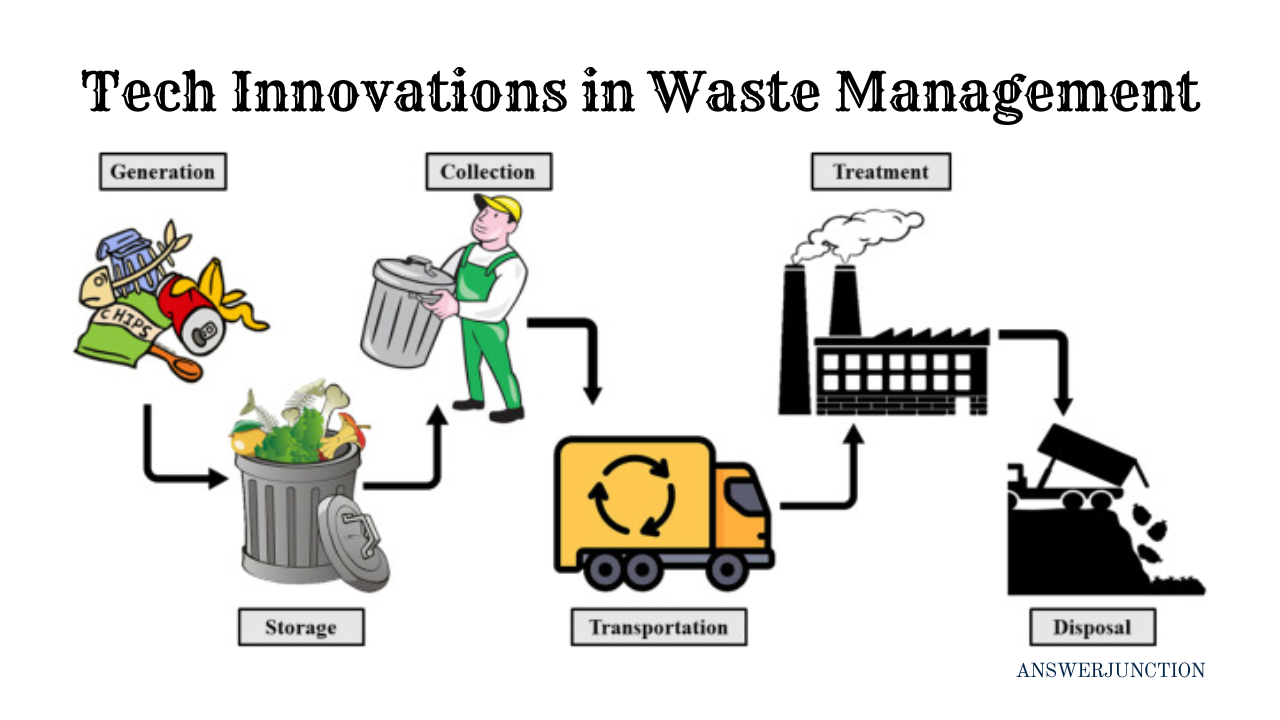Waste management is an essential aspect of modern urban living. As cities grow, so does the volume of waste generated. Traditional methods of waste disposal are becoming increasingly inefficient and environmentally harmful. However, recent technological innovations are transforming the waste management landscape, making it more efficient, sustainable, and economically viable. This article will explore the latest tech innovations in waste management, their impact on the environment, and their potential to revolutionize how we manage waste.
The Need for Innovation in Waste Management

The increasing global population and urbanization have led to an unprecedented rise in waste production. According to the World Bank, global waste generation is expected to increase by 70% by 2050, reaching 3.4 billion tons per year if current trends continue. This surge in waste presents a significant challenge to waste management systems, which are often ill-equipped to handle such volumes sustainably. Traditional waste management techniques, including landfilling and incineration, not only take up valuable land resources but also contribute to greenhouse gas emissions and other environmental issues. Consequently, there is an urgent need for innovative solutions to tackle these challenges effectively.
Smart Waste Management Systems
One of the most significant innovations in waste management is the implementation of smart waste management systems. These systems utilize the Internet of Things (IoT) technology to improve the efficiency of waste collection and disposal. Smart bins equipped with sensors can monitor fill levels, allowing waste management companies to optimize collection routes and schedules. This reduces fuel consumption and lowers operational costs, while also minimizing the carbon footprint associated with waste collection.
Cities like Barcelona and Amsterdam have already begun implementing smart waste management solutions. In Barcelona, sensors in waste bins provide real-time data on waste levels, enabling more efficient collection routes. This not only conserves resources but also enhances service delivery to residents. As smart waste management technologies continue to evolve, they promise to revolutionize the way cities approach waste disposal and recycling.
Recycling Technologies
Advancements in recycling technologies are also playing a crucial role in waste management. Traditional recycling processes can be labour-intensive and often result in contamination, which reduces the quality of recycled materials. New technologies, such as automated sorting systems powered by artificial intelligence (AI) and machine learning, are improving recycling efficiency and effectiveness.
The Role of IoT in Vehicle-to-Everything (V2X) Communication
These AI-driven systems can analyze materials as they pass through a sorting line, accurately identifying and separating recyclable items from non-recyclables. This reduces the reliance on manual labour and minimizes human error, leading to higher recycling rates and better-quality recyclables. For example, companies like AMP Robotics are developing AI-powered robots that can sort through mixed recyclables, improving processing speeds and reducing contamination.
Moreover, innovations like chemical recycling are emerging as viable solutions for complex materials that are difficult to recycle through traditional methods. Chemical recycling breaks down plastic waste into its fundamental monomers, allowing for the production of new, high-quality plastic products. This process not only helps reduce the volume of waste in landfills but also conserves natural resources by decreasing the need for virgin materials.
Waste-to-Energy Technologies
Another promising innovation in waste management is waste-to-energy (WTE) technologies. These technologies convert waste materials into usable energy, such as electricity or heat. By harnessing the energy potential of waste, WTE systems can significantly reduce the volume of waste sent to landfills while providing a renewable source of energy.
There are various WTE technologies, including incineration, anaerobic digestion, and gasification. Incineration involves burning waste at high temperatures to generate steam, which is then used to produce electricity. While incineration has been criticized for its emissions, modern facilities are increasingly equipped with advanced air pollution control technologies to minimize harmful emissions.
Anaerobic digestion is another effective WTE technology that breaks down organic waste in the absence of oxygen, producing biogas that can be used as a renewable energy source. This process not only reduces the volume of waste but also generates valuable byproducts, such as compost, which can be used as fertilizer.
Gasification, on the other hand, converts organic materials into syngas through a high-temperature chemical process. These syngas can then be used to produce electricity, fuels, and chemicals. Gasification offers a cleaner alternative to traditional incineration and has the potential to significantly reduce greenhouse gas emissions associated with waste disposal.
![]()
The Role of Artificial Intelligence and Data Analytics
Artificial intelligence (AI) and data analytics are playing an increasingly critical role in the waste management sector. These technologies enable waste management companies to optimize their operations, predict waste generation patterns, and improve customer service. For instance, AI algorithms can analyze historical data to forecast future waste volumes, allowing companies to allocate resources more effectively.
Data analytics can also help identify trends and patterns in waste generation at the community level. By understanding which areas produce the most waste and what types of waste are generated, cities can implement targeted waste reduction programs and recycling initiatives. This proactive approach to waste management can lead to significant reductions in waste generation and improve overall sustainability.
Furthermore, AI-powered applications are emerging that allow residents to manage their waste better. For example, mobile apps can provide users with information on local recycling programs, waste collection schedules, and tips for reducing waste. By empowering individuals to take an active role in waste management, these technologies can foster a culture of sustainability within communities.
Drones and Robotics in Waste Management
The use of drones and robotics in waste management is another innovative trend gaining traction. Drones equipped with cameras and sensors can be used to survey waste management facilities, landfills, and illegal dumping sites. This aerial perspective allows for more efficient monitoring and assessment of waste management practices, helping identify areas that require attention.
Additionally, robotic systems are being developed to assist with waste collection and sorting. These robots can navigate through waste management facilities, picking up and sorting materials with precision and speed. This not only increases efficiency but also reduces the risk of injury to human workers.
Some companies are also experimenting with using drones for waste collection in hard-to-reach areas, such as beaches or remote locations. Drones can quickly and efficiently transport waste from these sites to disposal facilities, streamlining the collection process and reducing environmental impact.
Circular Economy and Sustainable Practices
Tech innovations in waste management align with the broader concept of the circular economy, which emphasizes the need to minimize waste and maximize resource efficiency. A circular economy aims to create closed-loop systems where waste is repurposed, recycled, or reused, reducing the need for new raw materials and minimizing environmental impact.
Innovative waste management technologies are essential for facilitating this transition towards a circular economy. For example, businesses are increasingly adopting practices such as take-back programs, where consumers return used products for recycling or refurbishment. This not only promotes responsible consumption but also fosters a culture of sustainability.
Moreover, companies are exploring ways to design products with end-of-life considerations in mind, making them easier to recycle or compost. By incorporating sustainable design principles, manufacturers can contribute to waste reduction and enhance the overall efficiency of waste management systems.
Community Engagement and Education
For tech innovations in waste management to be successful, community engagement and education are vital. Residents must understand the importance of proper waste disposal, recycling practices, and sustainable behaviours. Education programs can help raise awareness about the impact of waste on the environment and encourage individuals to adopt more responsible waste management practices.
Many cities and organizations are implementing community outreach initiatives that focus on educating residents about recycling, composting, and waste reduction. These programs often include workshops, informational campaigns, and hands-on activities to engage the community. By fostering a culture of sustainability and encouraging individuals to take ownership of their waste management practices, communities can significantly reduce waste generation and improve recycling rates.

Additionally, involving local communities in decision-making processes related to waste management can lead to more effective and sustainable solutions. When residents are engaged in discussions about waste management policies, they are more likely to support and participate in initiatives that promote sustainability.
The Future of Waste Management
As we move forward, the future of waste management will likely be shaped by continued technological innovations and a growing commitment to sustainability. The integration of smart technologies, AI, and data analytics will further enhance the efficiency of waste management systems, allowing cities to adapt to changing waste generation patterns and improve service delivery.
Moreover, as public awareness of environmental issues increases, there will be a greater demand for sustainable waste management practices. This shift will encourage the adoption of circular economy principles, driving innovation in product design, waste reduction, and recycling.
Ultimately, the success of these innovations will depend on collaboration among governments, businesses, and communities. By working together to implement new technologies and promote sustainable practices, we can create a more efficient, environmentally friendly waste management system that meets the needs of future generations.
Tech innovations in waste management are transforming the way we handle waste, offering solutions to the growing challenges of urbanization and waste generation. From smart waste systems to advanced recycling technologies, these innovations are improving efficiency, reducing environmental impact, and fostering a culture of sustainability. As we embrace these changes and work towards a more sustainable future, it is essential to prioritize community engagement, education, and collaboration to ensure the success of these initiatives. By doing so, we can pave the way for a cleaner, greener world that values resource efficiency and environmental responsibility.




